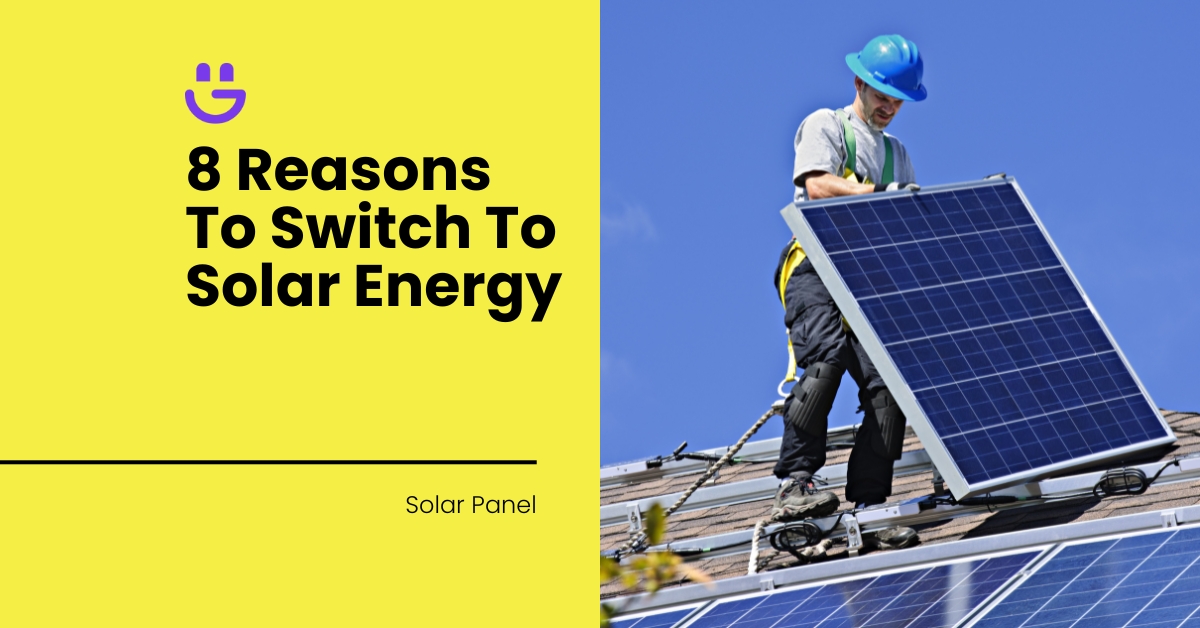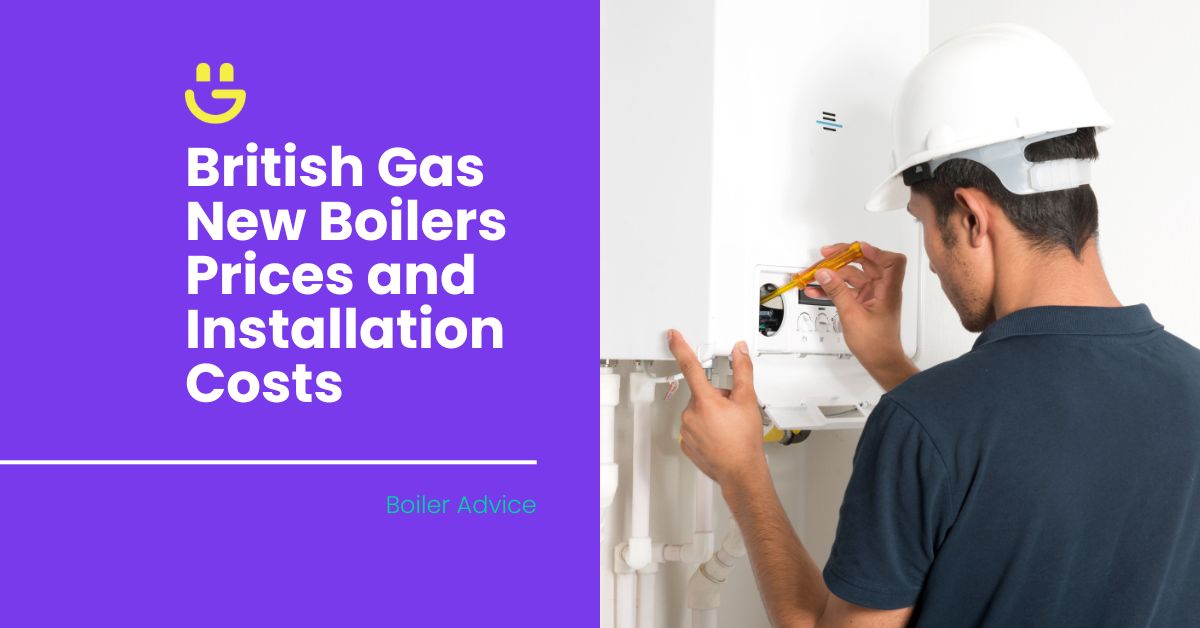Last Updated on November 14, 2025
Yes. Solar panels can be installed on a flat roof.
The good news is that installing solar panels on a flat roof can be easier than the process for a pitched roof.
Installing flat roof solar panels costs about the same as other solar panels. While a flat roof solar panel system will typically require some financial outlay on mounting systems, this cost is often offset by lower labour costs.
Read on for more about the installation process for solar panels on flat roofs, the costs involved, and other useful details to help you make an informed decision about solar panels.
Contents
How Are Solar Panels Installed on a Flat Roof?
Solar panels on a flat roof can be easier to install than solar panels on a sloped roof. However, the job typically requires more equipment and could include a ballast to weigh down the frame if it cannot be screwed to the roof.
An advantage of a flat roof solar panel system is its accessibility, which means installers will potentially have more room to work.
Aside from these differences, the solar panels work the same, whether they are on flat roofs or sloped roofs. Also, the process that certified installers use to install solar panels is similar.
Step 1: Professional assessment
A certified professional installer will need to assess your needs and property to determine how many solar panels are necessary to fulfil your energy requirements. Since roof materials, angles, and orientations vary considerably, this step is vital.
Flat roof solar panels are mounted on brackets to secure them and to attain the best angle and orientation possible.
An angle of between 30 and 40 degrees is optimal for capturing and converting as much energy as possible.
A professional installer can maximise efficiency despite roof position or design limitations. They will also check whether they can drill into the roof to secure the mounting systems and whether the roof can handle the weight of the installation.
Step 2: Preparation of the site
Installers use scaffolding on most solar panel installation jobs to ensure safety. Flat roofs, however, can be far more accessible than sloped roofs. This can lead to lower labour costs and quicker installation.
Preparing your roof means making it as accessible as possible for the installation process. This might mean removing obstructions like tree branches, a satellite dish, or obsolete vents.
At this stage, installers may also use additional frames or other structural elements to support and strengthen the roof.
Step 3: Installing the mounting system
Installing the mounting system for solar panels on a flat roof can become more expensive than other kinds of roof types.
Securing the panels requires more mounting equipment than on a pitched roof, such as a ballast to weigh down the frame. This is necessary if the installer determines that drilling into the roof to secure the frame is impossible or less effective.
Step 4: Attach flashing
Plastic or lead flashing is used to waterproof around mounting brackets where drilling has occurred. This step may not be necessary if the installer uses ballast exclusively.
Step 5: Attach rails
Typically, rails are fixed onto anchor racks. This is how the installer mounts the solar panels onto the frame.
Step 6: Positioning the solar panels
Once the mounting system is in place, the solar panels are lifted to the roof. The installer can then fit them to the rails and secure them.
Flat roof solar panels require a small distance between them to ensure they do not sit in a shadow, which would reduce their efficiency. This could also drive up costs for your solar set-up.
If space is an issue, it’s worth considering using fewer, higher quality (and, thus, more expensive) solar panels. They can capture more green energy than cheaper panels despite limited space.
Step 8: Set up inverters and electrical connections
The certified solar panel installer will route the necessary cables to connect your panels to your inverter, and then your fuse board.
Step 9: Connect the battery
If you decide to use a solar storage battery, the installer will connect this to the system.
A solar battery is useful for households, as they generally consume less energy during the middle of the day compared to the early morning and evening. Since the middle of the day is when the sun is at its strongest, more solar energy can be converted and stored for later use.
Missing out on the sun’s strongest rays may not be so much of an issue for commercial buildings where people are active during the day.
How Long Does It Take To Install Solar Panels On A Flat Roof?
The time it takes to install solar panels on a flat roof varies. A typical home solar system installation might take three or four days. Commercial solar panel installations may take anywhere from a few days to several months, depending on the scale and complexity.
However, installing PV panels on flat roofs is likely to take less time than most installations, since the roof is likely to be more accessible and require less preparation time.
The duration of the work will be influenced by:
- The number of panels required.
- The number of installers needed.
- The accessibility of the roof space and the condition of the roof’s surface.
- The necessity for scaffolding.
- Whether it’s necessary to connect solar batteries, an electric vehicle charger, or other fixtures.
How Much Does It Cost To Install Solar Panels On A Flat Roof?
The costs for installing flat roof solar panels range between £6,000 and £13,000+, excluding the solar battery or other fixtures.
A solar inverter is likely to cost between £700 and £,1600. However, when your installer gives you a quote, they normally include the cost of the inverter.
You might pay more for mounting equipment and more expensive solar panels to make the most of space. However, you’ll typically pay less for labour costs.
Factors that can influence the costs include:
- The size of your property.
- The size of the roof.
- The positioning of the roof.
- Your average energy consumption.
- How many panels are needed.
- The panels’ wattage (typically between 300W and 400W per panel for a residential property).
- Panel quality and efficiency.
| House Size | Annual Electricity Usage | Solar Panel System kWh Output | Number of Solar Panels – 350W | Price with Installation | Additional: Solar Battery Cost |
|---|---|---|---|---|---|
| 1 bedroom | <2,000 kWh | 3 kWh | 6-8 | £6,000 – £7,500 | £2,000 – £2,500 |
| 2 bedroom | 2,000 – 2,900 kWh | 3.5 – 4 kWh | 8-10 | £7,500 – £8,500 | £2,500 – £3,000 |
| 3-4 bedroom | 3,000 – 5,000 kWh | 5 kWh | 10-16 | £8,500- £10,500 | £3,000 – £4,500 |
| 5 or more bedrooms | 5,000 – 8,000 kWh | 6 kWh | 16-20 | £10,000 – £13,000+ | £4,500 – £7,000+ |
Are There Other Solar Panel Options For A Flat Roof?
Yes, there are other solar options that you could consider, including solar roof tiles and ground-mounted panels.
Solar roof tiles
Rather than constructing a mounting frame to install solar panels on a flat roof, it’s possible to use solar tiles if the angle is adequate.
They look similar to roof tiles and become part of the structure of the home, rather than an addition to the existing structure. They typically take longer to install than traditional PV panels, but blend in with the architecture.
Integrated panels
Integrated panels sit flush against the roof. They do not replace the protective function of roof tiles. They look like traditional solar panels and installers attach them to the roof via a mounting frame or other mounting system.
Ground-mounted solar panels
If your roof is unsuitable for a solar installation, you can consider ground-mounted solar panels instead. These are installed on a metal frame and are suitable almost anywhere on your property that gets enough sunlight.
Get A Solar Panel Installation Quote Today
Installing solar panels reduces your energy bills and carbon footprint. As well as being easy to install and maintain, solar panels can increase your property value and your bank balance.
If you want to be eco-minded and happy, contact us at Eco Happy for a free, no-obligation quote. We’ll also help guide you to make an informed decision about how much you can save and how effective solar panels can be for you.
FAQs
What type of roof material is best for flat roof solar panels?
Tar and gravel roofs are usually flat or at least low-pitched. Their advantages are that they tend to be able to support the weight of solar panels without additional structural support. They are also durable.
How far apart should solar panels be on a flat roof?
Flat roof solar panels need between 10 cm and about a metre between them to ensure they do not cast shade over each other.
The installer will determine the optimum distance that should be maintained between each solar PV panel or each row of panels to ensure they all stay in the sun.
How can you hide solar panels on a flat roof?
You may be able to hide solar panels with discreet positioning and by using or building a parapet wall. Covering the panels would limit their efficiency, but a professional installer may be able to camouflage them so they blend in with your architecture.
Our Verdict
Can solar panels be installed on a flat roof? Yes. Not only is installing a solar panel array on a flat roof possible, but it comes with many advantages, too.
Flat roof solar panels tend to be easier to install, maintain, and upgrade than PV systems on pitched roofs. Plus, they’re discreet, can save you money, and help save the planet. Contact us to dispel myths and answer your questions about solar panel systems. Eco Happy offers you expert advice and a free quote, so you can start enjoying renewable energy in your own home or business.





Tom Allen
Solar Expert